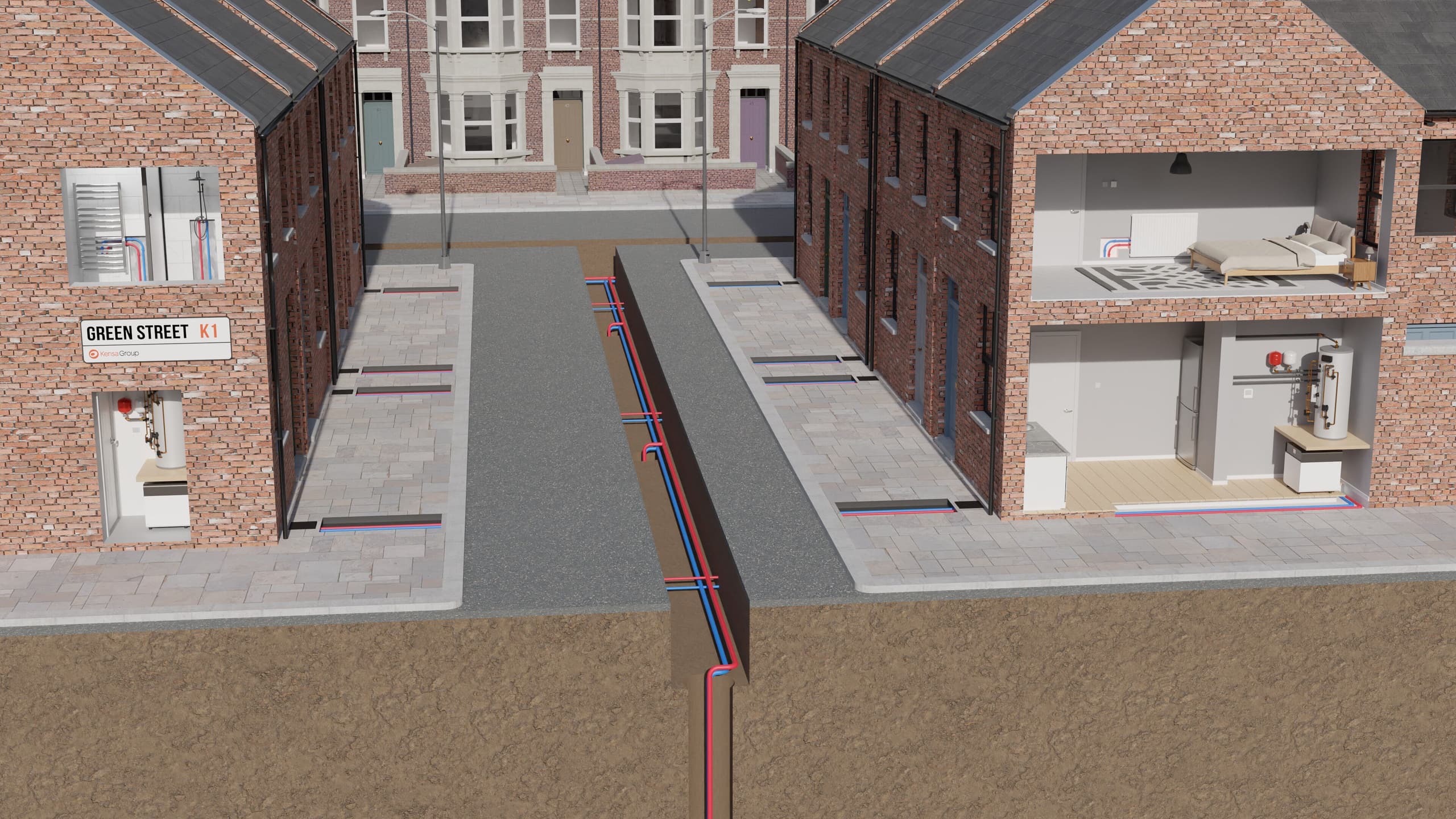Cultivate a growth mindset
- Public and Commercial
- 5 min read
The business benefits of ground source heat pumps for rural landowners
The phase-out of fossil fuel heating in buildings has been met with particular concern by those in the agricultural sector, however, this needn’t be as onerous as it may first seem.
Users of LPG and oil for farmhouses, and those utilising biomass for high-energy use processes, will be familiar with the burgeoning political pressures on combustion-system emissions. The 25-year Environment Plan coupled with the Clean Air Strategy is paving the way for the issue of formal policy proposals to reduce carbon and pollution, which will have a significant impact on agricultural uses of heating and cooling in both domestic and commercial applications.
And of course in addition to political pressures, the supply and cost of fossil fuels, and compliance requirements for biomass fuel sustainability, add to the case for alternative heating systems to be considered to future-proof agricultural businesses. For many, the case is strengthened even further by the wealth of diversification opportunities innovative heating systems can bring.
The solution is relatively simple, as well as financially rewarding, the biggest challenge they say is overcoming fear of change.
The business case for ground source
As well as providing substantial energy and cost savings, the business case for ground source heat pumps is very compelling. Paul Dennison, former Technical Sales Manager at Kensa, says:
Ground source is particularly suited to agricultural businesses with readily available land or water sources forWhat Heat Source can I use for a Heat Pump?Heat sourcesground arrays. And as slinkies and boreholes are installed below the ground, the land can still be used for crops or grazing. Plus, ground source heat pump systems can also be easily integrated with existing renewable technologies such as hydro, Solar PV and wind turbines, this allows business owners to direct any surplus heat into new business opportunities.
As a non-combustion heat source, ground source heat pumps produce  Reducing Air Pollution with Ground Source Heat PumpsReducing Air Pollution with Ground Source Heat Pumpsno point of use emissions – no NOx, no SOx, no particulates, and no CO2, lessening the onus of offsetting carbon through planting. Delivering three times as much energy as it consumes, if coupled with on-site electrical generation, ground source heat pumps offer a wholly self-sufficient heating and cooling solution whilst enabling diversification opportunities.
Reducing Air Pollution with Ground Source Heat PumpsReducing Air Pollution with Ground Source Heat Pumpsno point of use emissions – no NOx, no SOx, no particulates, and no CO2, lessening the onus of offsetting carbon through planting. Delivering three times as much energy as it consumes, if coupled with on-site electrical generation, ground source heat pumps offer a wholly self-sufficient heating and cooling solution whilst enabling diversification opportunities.
Fuel for change
Switched-on farmers are changing from traditional fossil fuel and biomass systems to ground source heat pumps to not only fuel their heating and cooling requirements but also to enable diversification.
Increasingly, common diversification schemes feature the conversion of buildings to holiday accommodation featuring individual ground source heat pumps inside each dwelling connected to ‘ Networked Heat PumpsA decarbonisation solution for over 60% of UK homesShared Ground Loop Arrays’; a form of communal heating which designs out the common issues of traditional district schemes, such as an unsightly central plant room. Paul says:
Networked Heat PumpsA decarbonisation solution for over 60% of UK homesShared Ground Loop Arrays’; a form of communal heating which designs out the common issues of traditional district schemes, such as an unsightly central plant room. Paul says:
Ground source heat pumps connected to shared ground arrays are an easy, financially rewarding, low-carbon and low-hassle choice for heating rural off-gas clusters of properties.
Of course Shared Ground Loop Arrays are not exclusive to barn conversions for holiday lets – any farm featuring clusters of more than one building can use this system.
A further advantage to Shared Ground Loop Arrays is the absence of heat losses through the pipework. Unlike plant room-based systems feeding heat to separate dwellings via pipework, with Shared Ground Loop Arrays, each individual ground source heat pump in each property upgrades the low temperature ‘heat’ energy fed to it by the ground for its own use, mitigating any heat losses to each dwelling.
More abstract diversification opportunities are also being explored by some of the more entrepreneurial, as Paul explains:
With the need for many landowners to find ways to replace the shortfall from CAP payments we are seeing more and more diversification enquiries for ground source, some of which have even surprised us with their innovative application suggestions! From using ground source heat pumps powered by on-site electrical generation to dry by-products for selling, such as manure for fertilizer, or rock salt for crisps, to maintaining constant warm temperatures for the ambient conditions required for hydroponics – we have even been approached to heat a cannabis and hemp facility for the legal production of CBD oil!
Back to basics
For many, the first tentative steps into ground source heat pumps are when they are used to replace ageing fossil fuel systems used in high energy consumption applications. It is in such cases that Kensa has helped numerous farmers to make the simple switch from cascaded boilers to cascaded modular  Solutions for non-domesticPublic and Commercialground source heat pumps. And of course, as with many uses of ground source heat pumps, there are more benefits than first meet the eye, rather than just a like-for-like heating system for heating system.
Solutions for non-domesticPublic and Commercialground source heat pumps. And of course, as with many uses of ground source heat pumps, there are more benefits than first meet the eye, rather than just a like-for-like heating system for heating system.
Cascaded ground source heat pump systems provide high efficiencies and low running costs by adjusting between minimum and maximum heat demand as needed – only ever producing the required amount of heat and hot water needed. Any high heat load can be matched with a cascaded system, as the central ground array is sized to deal with the peak heat demand, assuming the building can be heated up to a 50°C flow.
Cascaded systems also satisfy both space heating and domestic hot water demands at the same time. These types of systems feature multiple ground source heat pumps with one or more dedicated to the production of domestic hot water only, and the remaining units dedicated to the space heating load.
Having more than one heat pump also offers a degree of redundancy; in the unlikely event that one breaks down, the remainder of the system will continue to operate, avoiding any downtime for repairs, and mitigating any operational losses – saving the bottom line.


